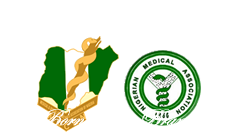Abstract Background: Endoscopic extraction of impacted sharp and or irregularly shaped esophageal foreign bodies is associated with higher complication rates and frequent failed extraction attempts especially in resource limited settings.Objectives: To review the management outcome of endoscopic extraction in a resource-limited endoscopy unit with a view to identifying factors in patient management requiring attention to improve patient care.Materials and method: This is a retrospective study of patients who presented with impacted esophageal foreign body to a tertiary health institution over a five year period (2001-2005) at a time when the rigid endoscopy unit was inadequately equipped.Case notes were retrieved and studied.Results: Sixteen (16) cases of sharp or irregularly shaped esophageal foreign bodies (SIFB) were studied, with dentures 7cases (43.8%) been most common. Age ranged from 10 months to55 years with a mean of 21.8 years. While 15 cases (93.8%)presented within 12 hours of the incident to the initial health facility, the mean duration of impaction at presentation to our centre was 2.8days. In 15 cases (93.8%), pre-operative plain radiographs revealed accurately the site of impaction. In 12 cases(75%), the SIFB was impacted at the cricopharyngeal area.Fifteen (93.8%) SIFB were endoscopically extracted successfully by consultant otorhinolaryngologist. Mucosal abrasion was the most common complication. No case of esophageal perforation or mortality was recorded. Average hospital stay was 3 days.Conclusion: Success at endoscopic extraction of SIFB can be achieved if the operator is experienced even in the face of inadequate equipment. Factors contributing to successful outcome include pre-operative radiological localization and cervical esophageal arrest of the foreign bodies. Delayed presentation due to referrals arising from paucity of endoscopy centres is common. While training and re-training of endoscopist is emphasized, it is recommended that health institutions in developing countries strive to acquire basic rigid endoscopy equipment.
[Abstract] [Full Article in PDF] [Discuss this Article] [Send a friend]

